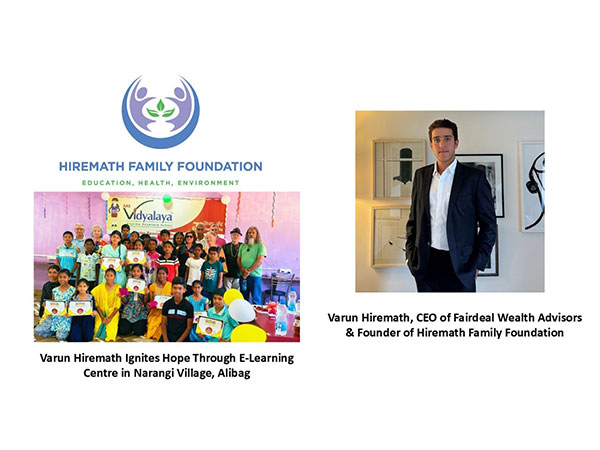
At least 77 million children, adolescents have some form of malnutrition in MENA: UNICEF
Aug 20, 2024
Amman [Jordan], August 20: At least 77 million, or 1 in 3, children in the Middle East and North Africa (MENA) have some form of malnutrition, according to the Regional Nutrition Strategic Direction for MENA launched by UNICEF today in Amman.
The new analysis finds a staggering 55 million children in the region are overweight or obese, with these forms of malnutrition on the rise among school-aged children in all 20 countries in the region. One in three school-aged children and adolescents are living with overweight and obesity.
A further 24 million children suffer from undernutrition, including stunting, wasting and thinness.
In the past 20 years, progress has been made to reduce the regional prevalence of stunting - or low height for age - which is an indicator of chronic undernutrition in children under 5 years of age. Still, the problem persists at scale, affecting 10 million children under 5 years of age in the region.
"The Middle East and North Africa region is confronting an increasingly complex triple burden of malnutrition that is undermining the growth, development and future potential of its children," said UNICEF Regional Director for the Middle East and North Africa Adele Khodr. "This is occurring against a complex backdrop of ongoing conflicts, political instability, climatic shocks, and rising food prices that together, deny children their right to nutritious food and limit humanitarian access to vulnerable communities."
"Many of the same challenges affect women of child-bearing age, with 9 million or 5 per cent of women in MENA being underweight and an alarming 114 million or 68 per cent living with overweight and obesity. In 17 countries in the region, the prevalence of overweight and obesity among adult women exceeds 60 per cent, significantly higher than the global average of 45 percent," she added.
The Regional Strategic Direction for Nutrition in MENA groups the 20 countries in the region into four "clusters" and outlines strategic approaches to addressing the nutrition challenges in each, Khodr noted.
"The face of malnutrition looks vastly different across the region, and so, we must address the underlying drivers of all forms of malnutrition according to each country's context. With this strategic direction, UNICEF outlines how it intends to do this by the end of the decade to help ensure national food systems are strong and sustainable, quality nutrition services are within reach, and nutritious foods are available and affordable for every child - no matter who they are or where they live." Khodr added.
Source: Emirates News agency









